The ARM vs x86 Wars Have Begun: In-Depth Power Analysis of Atom, Krait & Cortex A15
by Anand Lal Shimpi on January 4, 2013 7:32 AM EST- Posted in
- Tablets
- Intel
- Samsung
- Arm
- Cortex A15
- Smartphones
- Mobile
- SoCs
Cortex A15: SunSpider 0.9.1
SunSpider performance in Chrome on the Nexus 10 isn't all that great to begin with, so the Exynos 5250 curve is longer than the competition. I wouldn't pay too much attention to overall performanceas that's more of a Chrome optimization issue, but we begin to shine some light on Cortex A15's power consumption:
Although these line graphs are neat to look at, it's tough to quantify exactly what's going on here. Following every graph from here on forward I'll present a bar chart that integrates over the benchmark time period (excluding idle) and presents total energy used during the task in Joules.
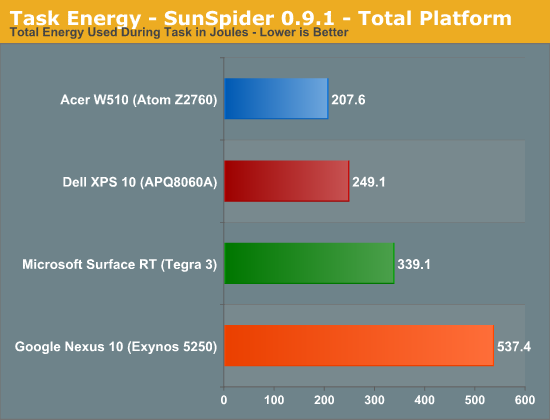
The data here reflects what you see in the chart above fairly well. Acer/Intel manage to get the edge over Dell/Qualcomm when it comes to total energy consumed during the test. The Nexus 10 doesn't do so well here but that's likely a software issue more than anything else.
CPU power is just insane. Peak power consumption is around 3W, compared to around 1W for the competition.
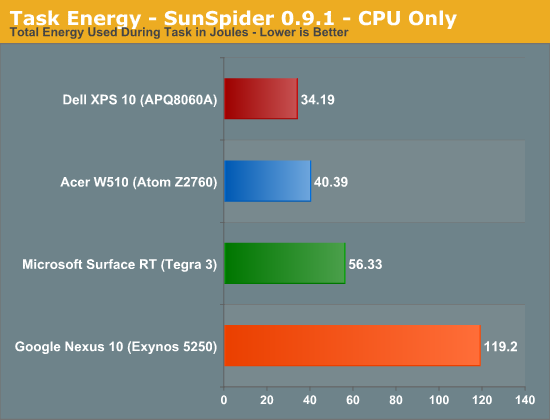
Looking at the CPU core itself, Qualcomm appears to have the advantage here but keep in mind that we aren't yet tracking L2 cache power on Krait (but we are on Atom). Regardless Atom and Krait are very close.
Even GPU power consumption is pretty high compared to everything else (minus Tegra 3).
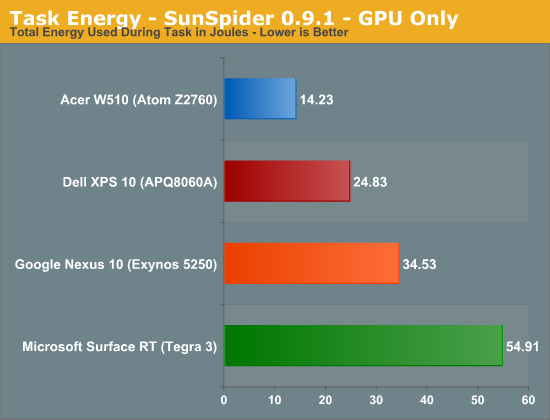
SunSpider - Max, Avg, Min Power
For your reference, the remaining graphs present max, average and min power draw throughout the course of the benchmark (excluding beginning/end idle times).
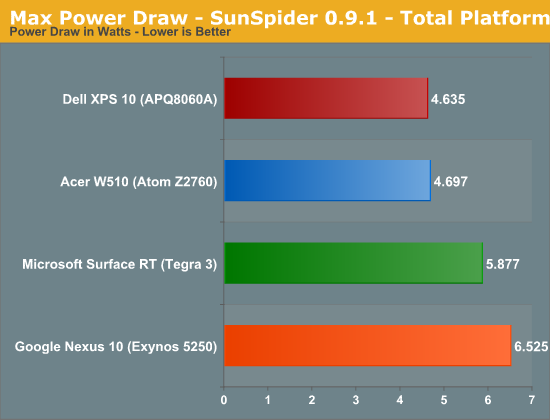
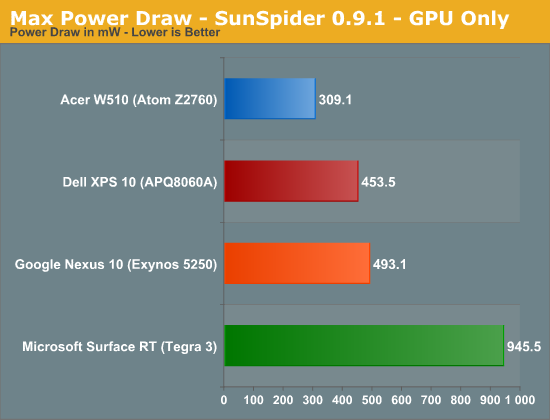
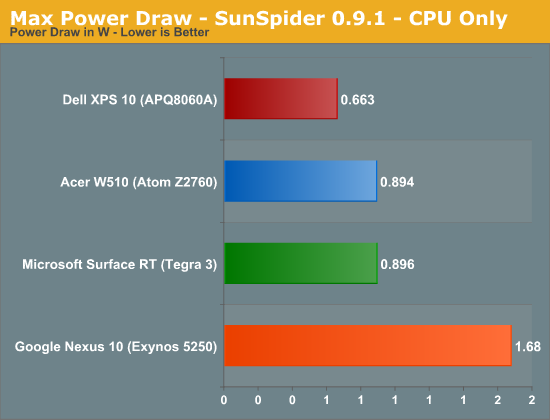
Average Power Draw
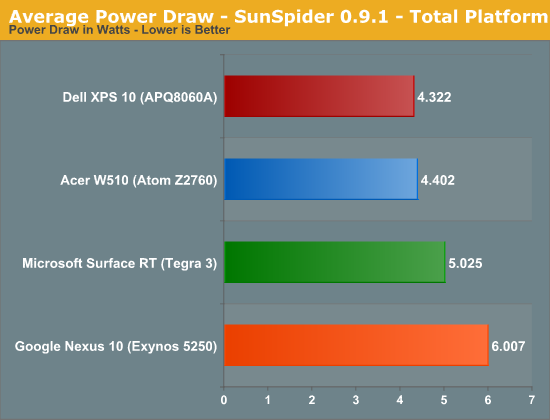
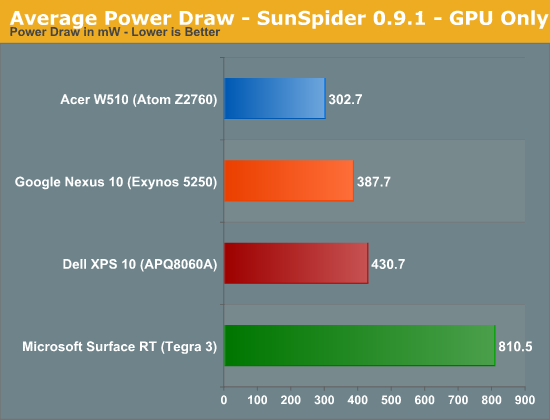

Minimum Power Draw
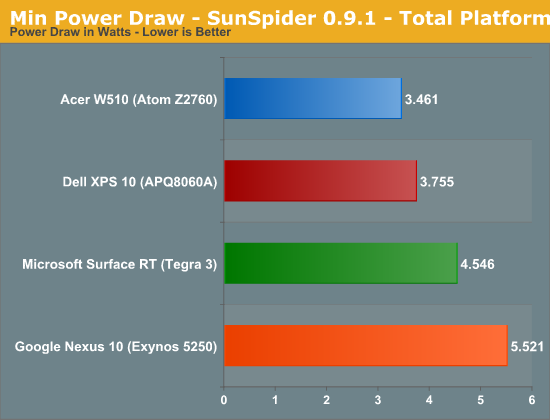
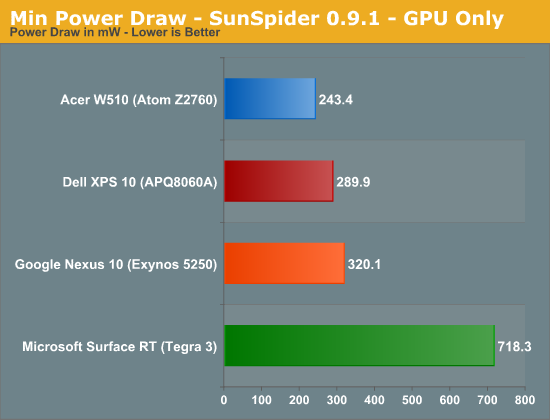
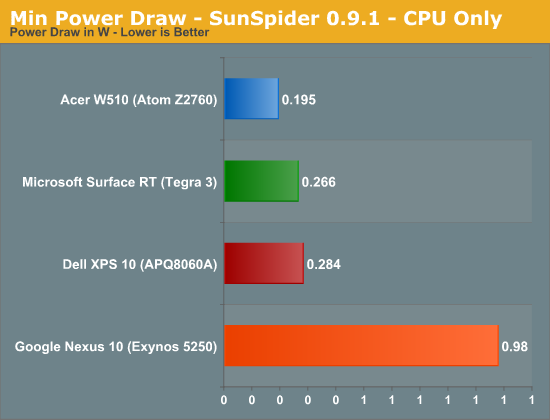


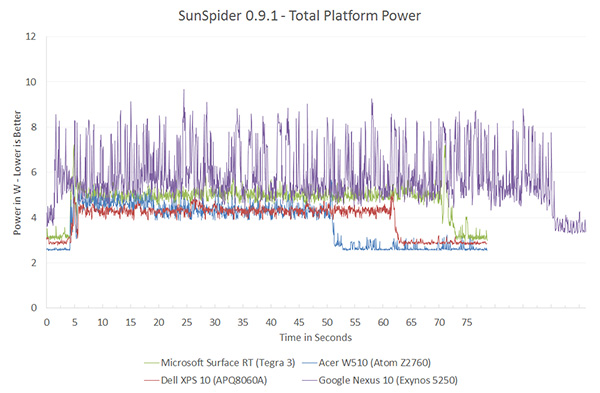
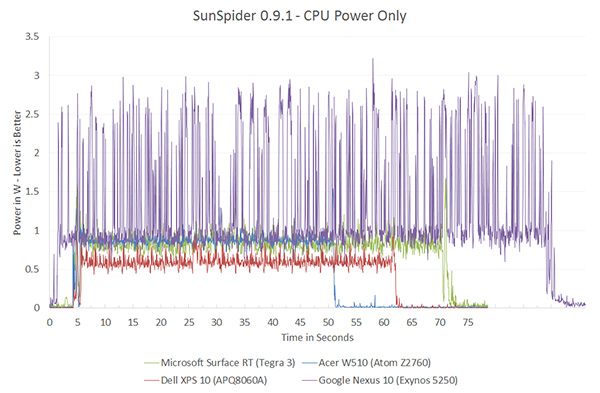
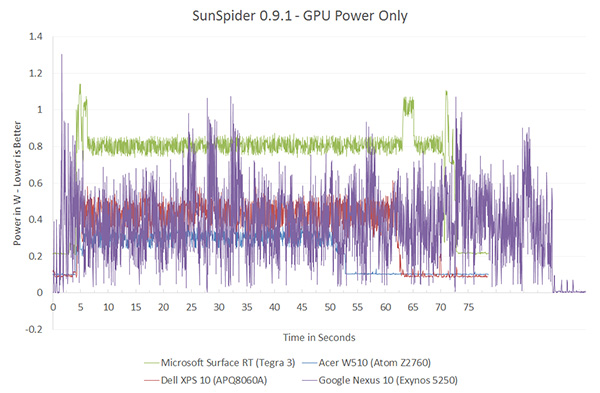








140 Comments
View All Comments
gryer7421 - Friday, January 4, 2013 - link
aaaand then looses where it matters, the rest of the platform. one more process shrink and both will be on even terms in cpu power usage and then as a whole platform will start punching arm in the face.Wolfpup - Friday, January 4, 2013 - link
Huh? Did you read the article? Atom built on 32nm is competitive with ARM built on 28nm. Not only that, but it's looking like Haswell will realistically be able to compete here too, and we've got the second gen Atom coming up this year too...but TODAY'S Atom at an older process is competitive with ARM...what you're claiming is exactly the opposite of what the article says.JumpingJack - Friday, January 4, 2013 - link
I don't think we are looking at the same data, overall Atom appears to uses the same or less power than Krait and offers better performance in general.Homeles - Friday, January 4, 2013 - link
"Anyone with half a brain" would read the article before making such an idiotic statement.Rezurecta - Saturday, January 5, 2013 - link
wow. Way to belittle Anand's hard work...Great article! One of the many reasons I love this site. :)
Death666Angel - Friday, January 4, 2013 - link
The Star Wars theme to play in my head! Thanks for that! :DDeath666Angel - Friday, January 4, 2013 - link
"I wonder what an 8W Haswell would look like in a similar situation."Me too. However, considering that they 17W ULV parts only reach those numbers by throttling as well, I don't expect a lot.
carancho - Friday, January 4, 2013 - link
Amazing work. Congratulations! A couple of presentation suggestions:Next time please smooth some of the most important charts. The volatility makes it hard to see where the averages are. Take this chart: http://images.anandtech.com/reviews/SoC/Intel/CTvK... it could really benefit to have another copy with some additional smoothing.
Also, in power charts like this http://images.anandtech.com/reviews/SoC/Intel/CTvK... it would be helpful to have as a summary followup chart the power calculation done and presented as bar charts; otherwise we have to resort to calculate the differences in the areas below the lines with our eyes, and they can be deceiving.
carancho - Friday, January 4, 2013 - link
I hadn't reached the A15 part yet when writing this. Ignore the 2nd comment.amorlock - Friday, January 4, 2013 - link
I'm frankly amazed and impressed that Intel can get Haswell down to 8W but it's hard to imagine it in a mid range mobile device because of the likely unit cost. The reason Atom has stagnated until recently is because Intel doesn't want to create a chip that cuts into it's very profitable mainstream CPU market.